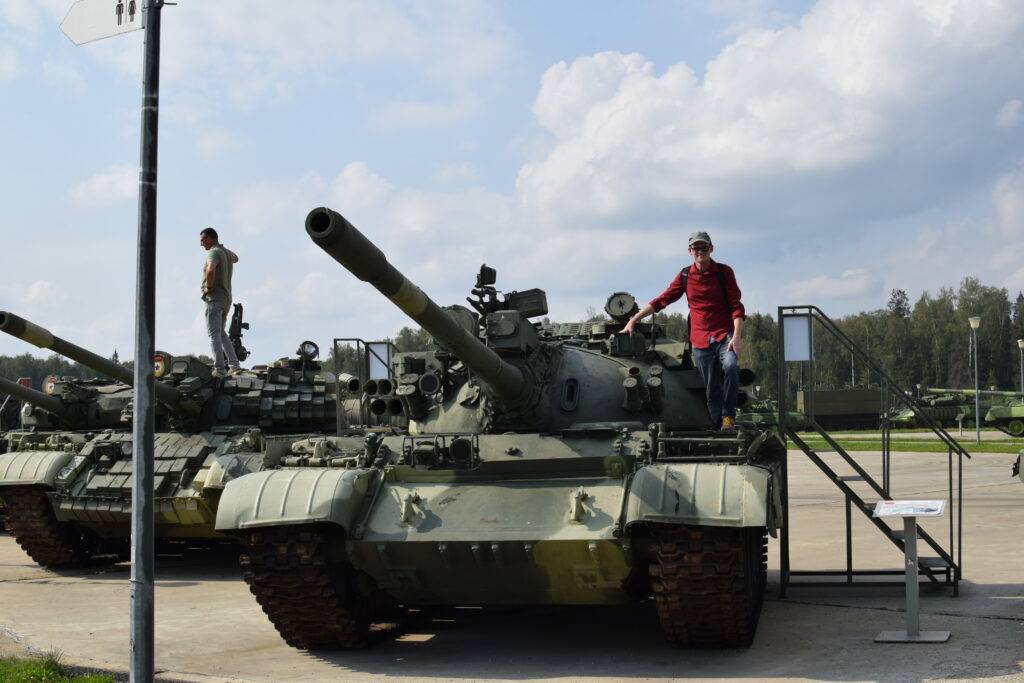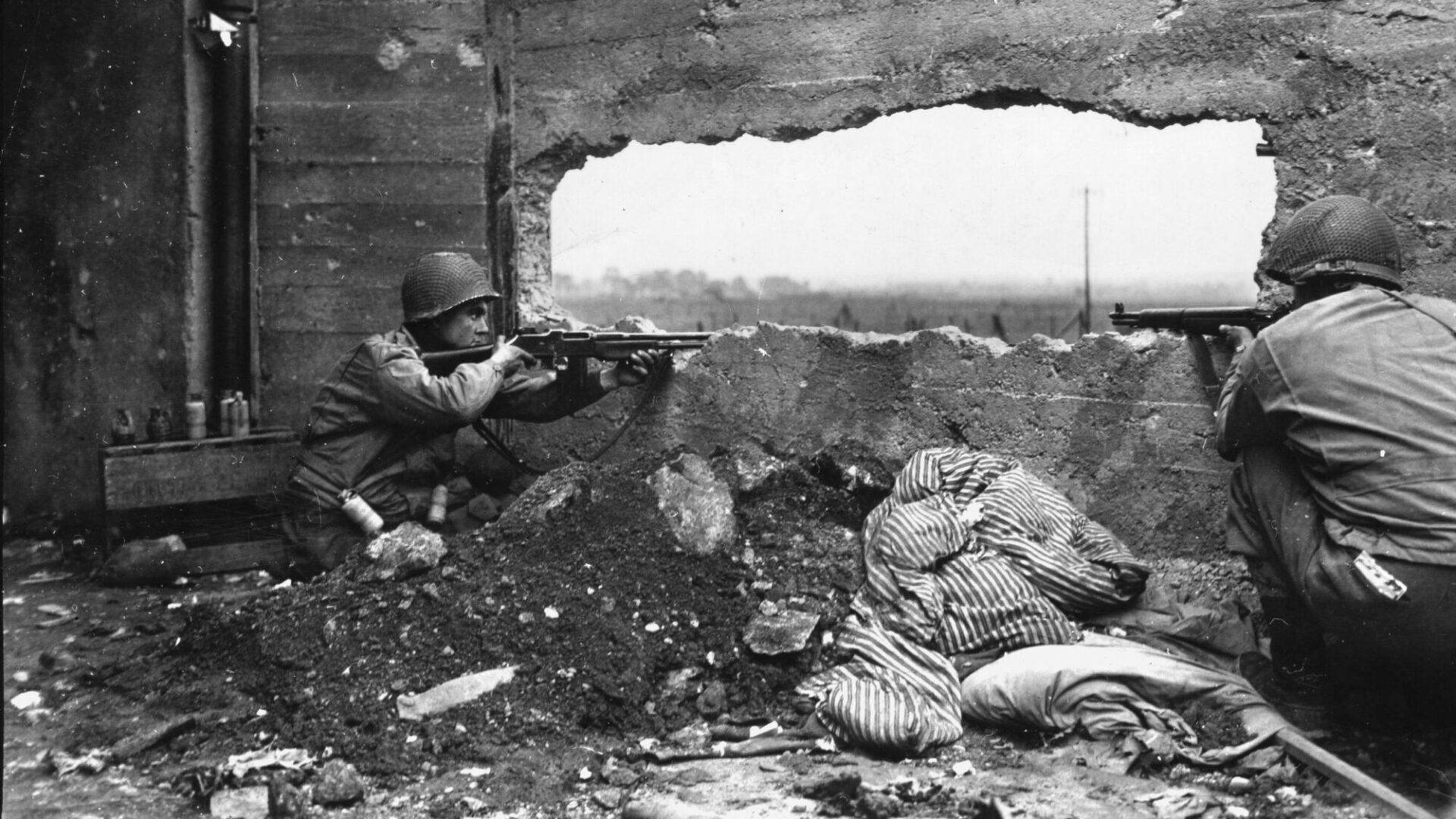There’s this perception in American pop culture that “modern” (AKA, WWII) maneuver warfare is good, and “WWI-style” warfare with static defenses is bad. This alleged supremacy of maneuver warfare originates from two primary historic examples, both from WWII.
The German Army, especially a few celebrities like Guderian, who could take credit for all the successes while blaming Hitler for all their failures. Hitler, apparently, was dead at this point, so could not give his side of the story. At yet, the Axis was defeated by the Soviet Union. This leaves us with a bit of a conundrum, because that means either maneuver warfare is not so good, or that the Soviets were also good at maneuver warfare. Neither of these suggestions are acceptable to the western war enthusiast, so unfortunately, Hitler’s Germany alone isn’t a solid enough foundation for war mythology.
But then there was Gen. George Patton, the swaggering larger-than-life super hero with ivory-handled revolvers and a brash, no-nonsense attitude. He, like his German adversaries, was good at maneuver warfare. And unlike most of his peers like Omar Bradley and Douglas Montgomery, left a legacy untarnished by bumbling failures and pervasive mediocrity.
So, thanks to Patton, everyone can comment on wars of the past, present, and future, nodding their heads in unison while spouting altruisms like “the best defense is a good offense,” or “static defenses are bad, Patton said so!”
But, is it true? Does a mechanized army practicing “maneuver warfare” truly have no difficulty against an enemy with those bad primitive “static defenses” like trenches, concrete bunkers, and minefields?
Well, as the current war in Ukraine seems to suggest, actually yes. And that’s hardly the only modern example. To find what might be the best example of a maneuver army getting blunted by static defenses, one need look no further than, ironically, Patton himself.
At the beginning of September 1944, Patton’s Third Army approached Metz, a humble town in the Lorraine region of France. Metz is of peculiar interest, both to a tourist troop and an invading army, for its octopus-like network of forts and defense structures dating back to the Middle Ages. It was theoretically possible to bypass, however, Patton was confident he could take it in ten days.
This turned out not to be the case. Local terrain and weather favored defense and disadvantaged tanks. American attacks were repeatedly bogged down and driven back. Later onset of rain and cold caught GIs still in their summer uniforms and caused thousands of cases of trench foot. The last pockets of German resistance in and around Metz were not taken until 8 December, more than three months and many tens of thousands of casualties later.
Consider this article written by Wesley Johnson, a historian for the 7th Armored Division Association.
I’m amazed at how the history books and movies about Patton and World War II always detail with awe his fantastic dash across France in August 1944. In one month, he had all but liberated the country. Related books and movies then skip ahead to December and the relief of Bastogne during the Battle of the Bulge. Rarely do any of them mention the long autumn of that year and the terrible bloody mess that was Metz.
Perhaps the most revealing detail of the battle for Metz is, rather, the lack of a detail. The casualties have apparently never been made public. However, Johnson’s article gives some clues:
The gravestones of the US Military Cemetery at St. Avold, France, are a precursor for the gravestones at Arlington National Cemetery of those who died the same day when an airplane flew into the Pentagon. At St. Avold, all too many dates of death are in a hauntingly narrow space of time… The cost of the siege of Metz was staggeringly high. 7AD paid much of that cost. C/38 ran into the strongest defense of the line 6 Sep 1944 and suffered their worst day of the entire war, worse even than the later battles at Overloon, Meijel or St. Vith. 23 AIB lost its CO and many men in the futile Dornot bridgehead across the Moselle River. 38 AIB lost five Battalion commanders in one day; historian Anthony Kemp wrote: “The day on which [38AIB] would win glory was 19 September, but it ceased to be a fighting force in the process.” And there were far more losses – all in the attempt to take Metz.
Third Army had around 230-250 thousand men and massive amounts of air support, including 1,200 bombers, up against roughly 80,000 German defenders. This gave Patton the much-coveted 3:1 advantage in numbers, and many times that in terms of fire support. Yet, this slogging battle only really ended because the entire German garrison was killed, wounded, surrendered, or driven away. Hitler had plans for his own winter offensive and saw Metz only as a delaying action. For this purpose, it was an absolute success for him.
All that said, however many soldiers Patton lost at Metz, the Germans certainly lost more. This is simply common sense, as we know the overall (low) American losses for WWII and Third Army certainly did not lose 1/3 of their strength at Metz, as they continued doing other things afterward, like playing a key role in the defeat of Hitler Ardennes offensive. The reason why Americans didn’t suffer 1:1 with the Germans here is because of their vast superiority in firepower. German artillery was outmatched and strongholds that couldn’t be stormed were simply obliterated.
In practice, regardless of what anyone says, every modern army has learned this key lesson from WWII. Maneuver is nice, but is not key to winning, but firepower is. As weapons grow longer-range and more destructive, they can and actually have largely replaced maneuver. Using infantry to storm bunkers and apartment blocks is senseless when they can simply be destroyed from afar.
Ian Kummer

All text in Reading Junkie posts are free to share or republish without permission, and I highly encourage my fellow bloggers to do so. Please be courteous and link back to the original.
I now have a new YouTube channel that I will use to upload videos from my travels around Russia. Expect new content there soon. Please give me a follow here.
Also feel free to connect with me on Quora (I sometimes share unique articles there).



WWI began with manoeuvre warfare (the First Battle Of The Marne was fought entirely on the move) and ended with manoeuvre warfare. The static phase was by and large a stalemate because both sides dug in. The Iran Iraq War was also mostly a war of static defences interspersed with (after 1983 mostly Iranian) offensives. Ironically it was the threat of a massive Iranian summer offensive in 1988 that would have captured the Baghdad Basra highway and cut Iraq in two that led to America giving Saddam Hussein permission and target coordinates for mass use of chemical weapons and brought the war to an end.
The problem with static warfare is that it is
1. Slow and hard to show progress.
2. Expensive and
3. Demoralising the longer it goes on.
Politicians with one eye on public opinion will be more and more ready to pull the plug when months and years go by with mounting casualties and no measurable victories.
The ubiquity of ISR assets and drones make maneuver warfare largely impossible … everything is transparent and it is impossible to spring surprises and maneuver forces in ways that the enemy has not anticipated. The range & accuracy of missile and artillery barrages also serve to constrain the possibilities to maneuver. Of course, static defenses can be breached or outflanked, and have the nasty habit of staying behind, useless. But at what cost?
In short, there are no formula’s or equations or doctrine in warfare to solve the problems in advance … such means only serve to deepen understanding of what/why certain tactics and actions proved successful/disastrous in retrospect.
As for Patton, Andrei Martyanov considers him the height of poorly understood lessons and the epitome of unjustified propaganda adulation.
By the way, for «altruisms» you mean something like adage, aphorism, or maxim.
I think the alliteration got you.’
or truism, cliche, platitude
In highschool our JV and Varsity Football Coaches had the same philosophy. JV Football was training for Varsity. We were a small 4A school with graduation classes of 200 students. Both our Coaches were WW2 Veterans.
The philosophy was “Defense Wins! All Offence needs to do is gain 4 yards per play.”. We defeated 5A teams and won the State Championship all four years I was there.
Yeah, Metz.